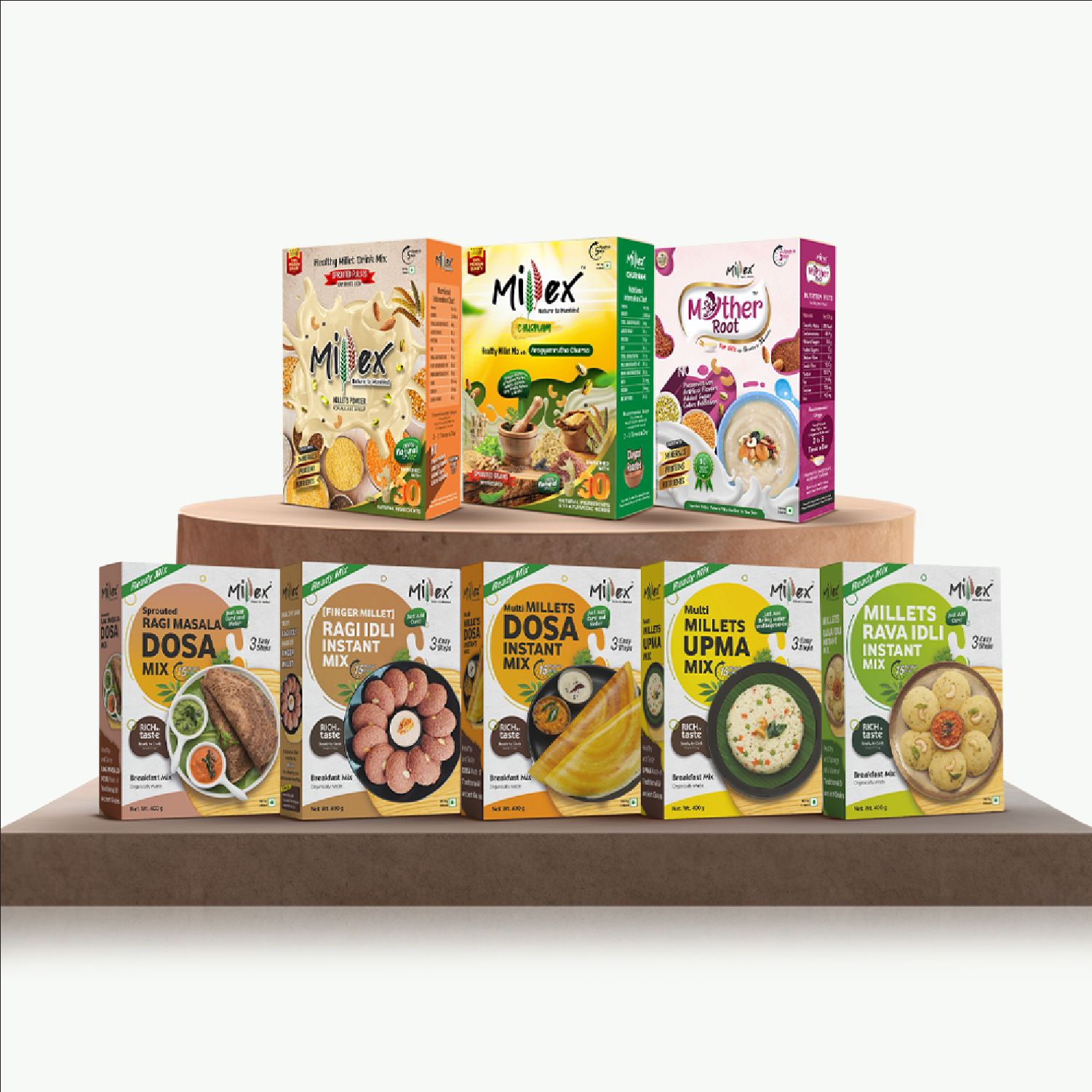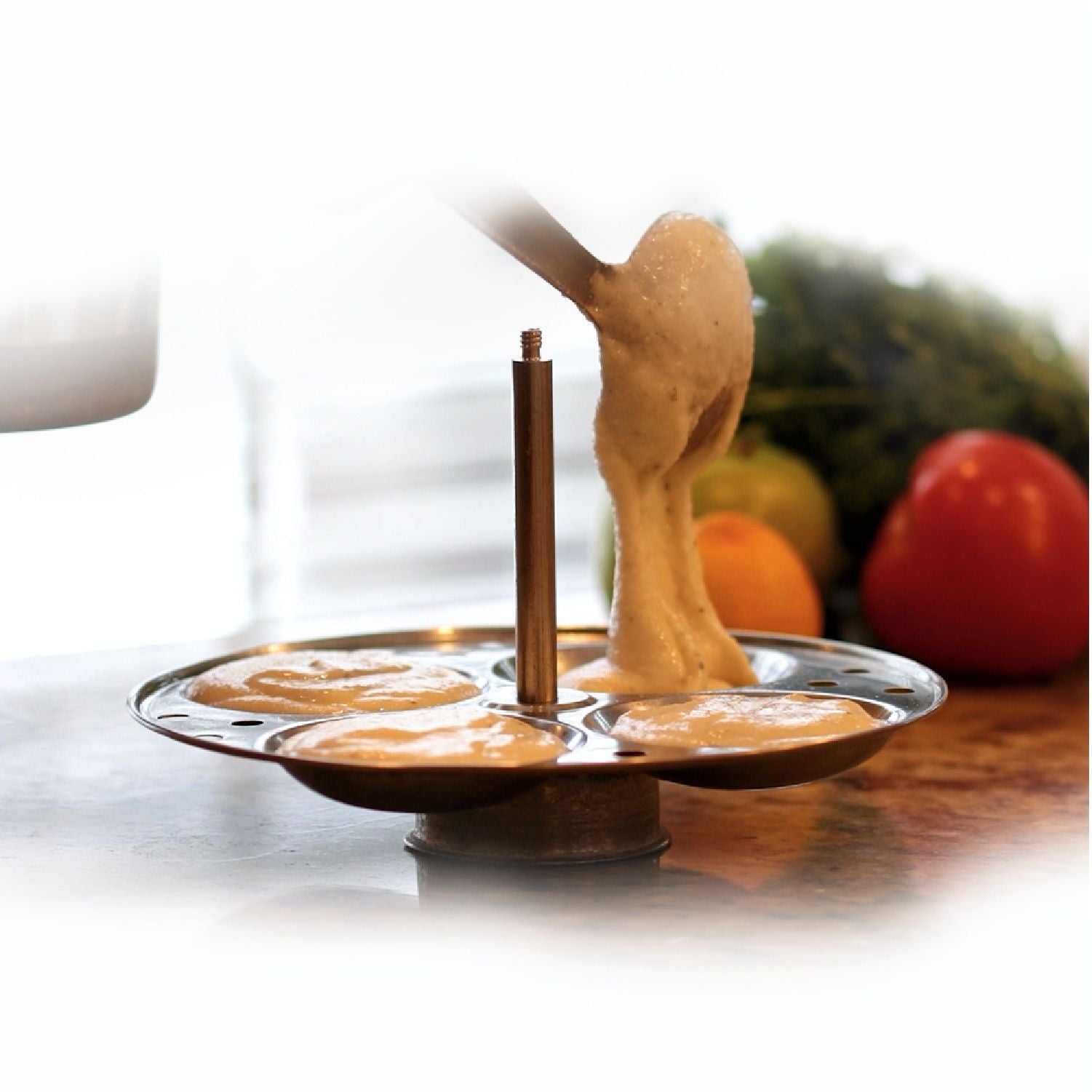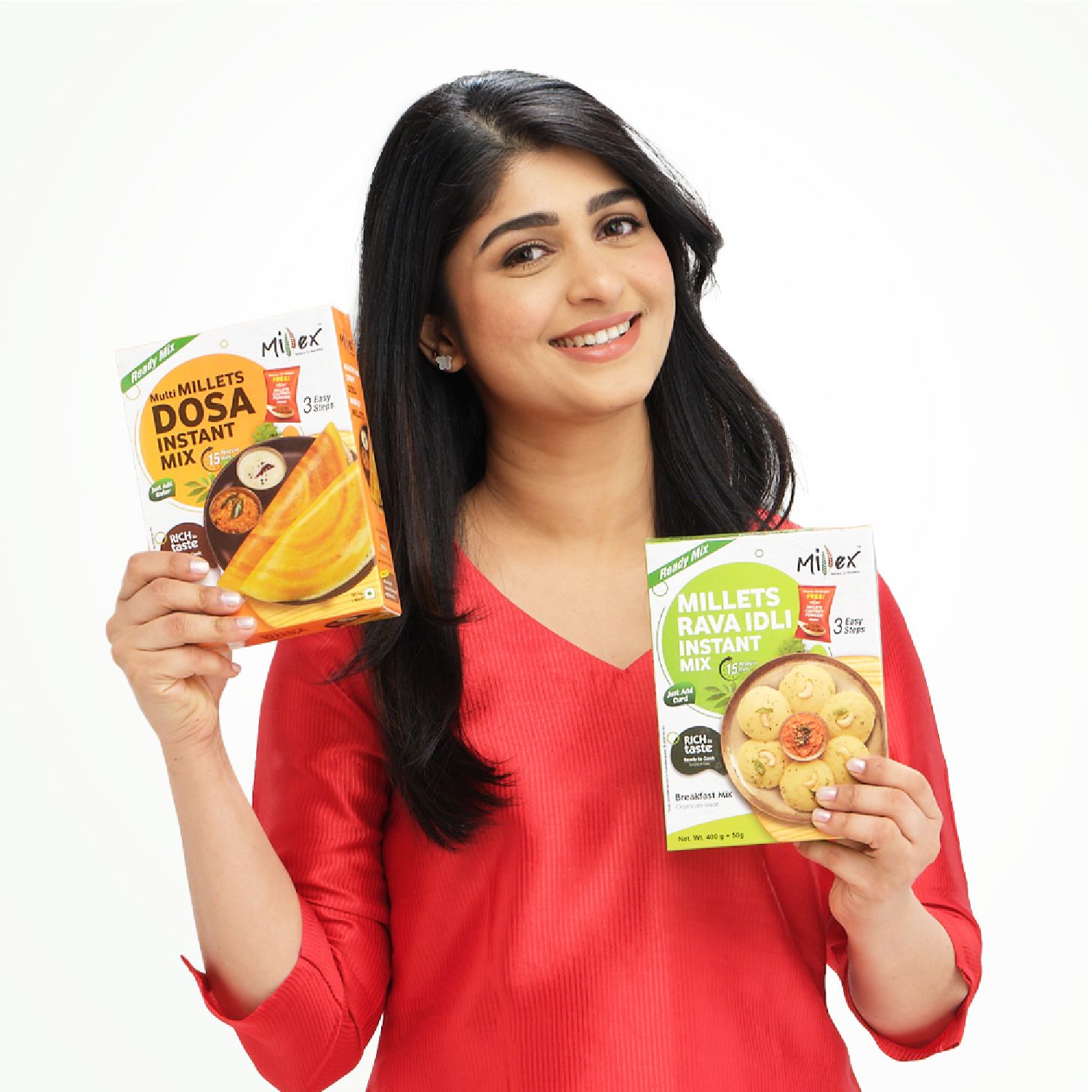Millets vs. Rice: Which is Better for You
If you are a person who is more conscious about your health, then you will definitely have come across the debate "millets vs. rice." Previously, people were unfamiliar about millet. This ongoing discussion revolves around the nutritional benefits and health impacts of these two staple foods.
Millets, once a lesser-known grain, have gained popularity for their exceptional nutritional profile, while rice, a dietary staple for many, has been scrutinized for its impact on health. As people started incorporating millets into their diet, millet mixes has become popular among them.
Are you looking for the best manufacturer who offers a healthy millet mix? If yes, then definitely it will be Millex. Our products contain a mix of all the millets, which keeps you energy-boosting for the whole day. In this post, you can look into the difference between millet and rice.
What is a Millet?
Millets are whole grains that come in many different varieties. These grains are good alternatives to rice, wheat flour, and other traditional grains due to their distinct nutritional profiles.
Millets are gluten-free and high in dietary fiber, making them perfect for people who are gluten intolerant or have celiac disease. Furthermore, millets have a lower glycemic index than rice, indicating a slower rise in blood glucose levels.
The various millets available provide good energy sources, vitamins, minerals, and necessary dietary fiber, ensuring that your body receives all the nutrients it requires.
What is Rice?
Rice is a basic food eaten by millions of people around the world. It is available in several kinds, including brown and white rice. While rice is a popular choice for many people, particularly in Asian countries, it may not be the most nutritious option when compared to millet.
Brown rice retains its bran and germ layers, has a higher fiber content, and provides more nutritious value. White rice, which has had its bran and germ layers removed, is the most often consumed type of rice and lacks the nutritional benefits of brown rice.
Rice is less healthy than millet in general health due to its greater glucose absorption levels and lower fiber content.
Nutritional Comparison Between Millet and Rice
When considering the nutritional value of millet compared to rice, several key factors come into play, influencing their suitability for various dietary needs.
Glycemic Index: Millet typically exhibits a lower glycemic index than rice, indicating that it causes a slower and more gradual increase in blood sugar levels after consumption. This characteristic makes millet a preferred choice for individuals seeking to manage blood sugar levels effectively and maintain stable energy levels throughout the day.
Caloric Content: Millet tends to be higher in calories than rice, with a 100g serving containing significantly more calories than an equivalent serving of rice. This higher caloric density of millet may benefit individuals seeking to increase their energy intake or maintain a healthy weight.
Carbohydrates: Millet is generally higher in carbohydrates compared to rice, providing a substantial amount of energy per serving. However, millet also tends to have a higher fiber content than rice, which can help promote feelings of fullness and satiety. It is suitable for those looking to manage their weight or improve digestive health.
Protein: Millet typically contains more protein than rice, making it a valuable source of this essential macronutrient. Protein is crucial for supporting muscle growth and repair and promoting feelings of fullness and satiety, making millet a suitable choice for individuals following a vegetarian or plant-based diet.
Micronutrients: Millet is often richer in certain micronutrients, such as iron, magnesium, and B vitamins, compared to rice. These nutrients play essential roles in various bodily functions, including energy metabolism, immune function, and nerve function, making millet a valuable addition to a balanced diet.
While rice and millet offer distinct nutritional profiles, millet emerges as a nutrient powerhouse, boasting higher levels of carbohydrates, fats, protein, minerals, and vitamins compared to rice. Incorporating millet health mix into your diet can provide a multitude of health benefits and contribute to a well-rounded nutritional intake.
Health Benefits: Why Millets Surpass Rice?
After examining the nutritional differences between millet and rice, consider why millet outperforms rice regarding health advantages. Millets, with their unique dietary profiles, provide numerous health benefits.
It makes them an excellent choice for supporting general well-being. Millets offer many benefits, from improving cardiovascular health to assisting with weight management, which rice cannot equal. Let's go deeper into these benefits.
- Weight Management
Millets emerge as valuable allies for individuals striving to achieve weight loss or maintain a healthy weight.
Millets are pivotal in controlling blood sugar levels due to their low glycemic index and high fiber content. The gradual digestion of millet results in a steady release of glucose, mitigating spikes in blood sugar levels and fostering sustained energy levels.
By incorporating millets into your dietary regimen, you can effectively manage your weight, curtail calorie consumption, and uphold a healthy weight without sacrificing flavor or essential nutrients.
- Aid in Diabetes Prevention
Millets prove particularly advantageous for individuals concerned about diabetes prevention and blood sugar regulation. It is due to their low glycemic index and abundant fiber content.
By facilitating a gradual release of glucose into the bloodstream, millets stabilize blood sugar levels, rendering them suitable choices for individuals with diabetes or those at risk of developing the condition.
Ragi benefits the human body by managing healthy blood sugar levels, mitigating the risk of blood sugar fluctuations, and proactively thwarting the onset of diabetes.
- Role of Millets in Children’s health
Millets are high in critical minerals and vitamins, which are good for children's development and nutrition.
They also contain more fiber and have a lower glycemic index than rice, which promotes healthy growth and development.
Parents can make an informed decision to include millet in their children's diets to promote their health and growth.
How do you balance Rice and Millet?
Most people are still used to taking rice in their daily diet. Are you feeling bored with that white rice and looking for some other alternative? If so, then millets will be the best choice. Read the following and get to know how to balance rice and millet intake:
Portion Control: Begin by assessing the ratio of rice to millet on your plate. Replace a portion of rice with equal millet, gradually increasing the millet portion while decreasing the rice portion over time. Now, incorporating millet into your daily diet is effortless with the Millex millet health mix. It ensures a balanced distribution of grains in your meal.
Mix and Match: You can't see different types of rice in the market. Even though other types of rice are available, they all give the same taste. Does it keep you bored? If so, here comes the millet. There are different types of millet available in the market. Seriously, each millet offers a different taste. However, buying all kinds of millets will cost a bit more. Are you looking for an affordable option? If yes, then buy the millet health mix from Millex. We incorporated all the millets and ayurvedic millets in our products.
Alternating Meals: Plan your meals to alternate between rice-based and millet-based options. This approach diversifies your grain intake and promotes a balanced diet. Use a meal planner can facilitate this rotation effectively.
Variety in Recipes: Trying out the different meals with rice can be boring. So now you can try other recipes with millet. This introduces variety to your meals and guarantees a well-rounded nutrient intake. You can make upma, dosa, idli and so on. If you live a busy schedule, enhance your dosa batter by incorporating the Millex Millet health mix, creating wholesome millet dosas.
Consider your needs: Consider your dietary requirements and health objectives. If you attempt to reduce carbs or regulate your blood sugar, you might want to eat more millet and less rice. Before making any significant dietary changes, seek specific advice from a nutritionist or your physician.
Final Verdict
One should consume more millet than rice. Certain researchers have found that a high intake of rice will cause health issues like diabetes, weight gain issues, and so on. If you looking to change your lifestyle, first start with your diet. Incorporate more millet into your daily diet and see changes in your health. Also, you can start your day with the best millet mix powder from Millex. Do you know why Millex products are best? Our products are packed with all the millet available on the market. These millets are carefully dried, powdered, and packed.






